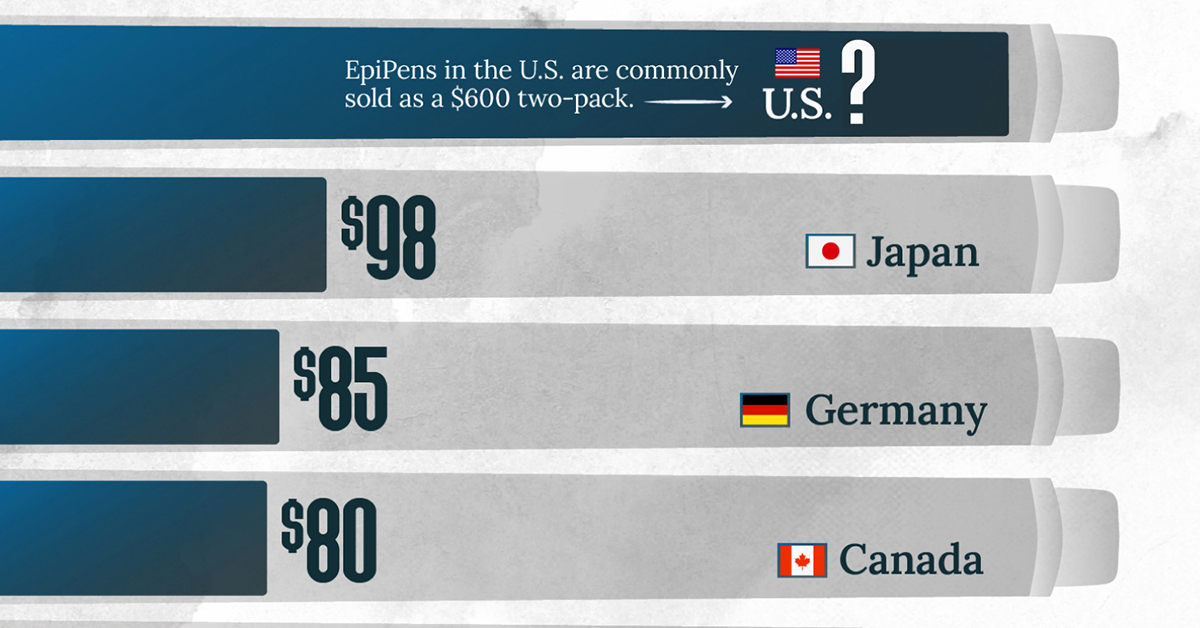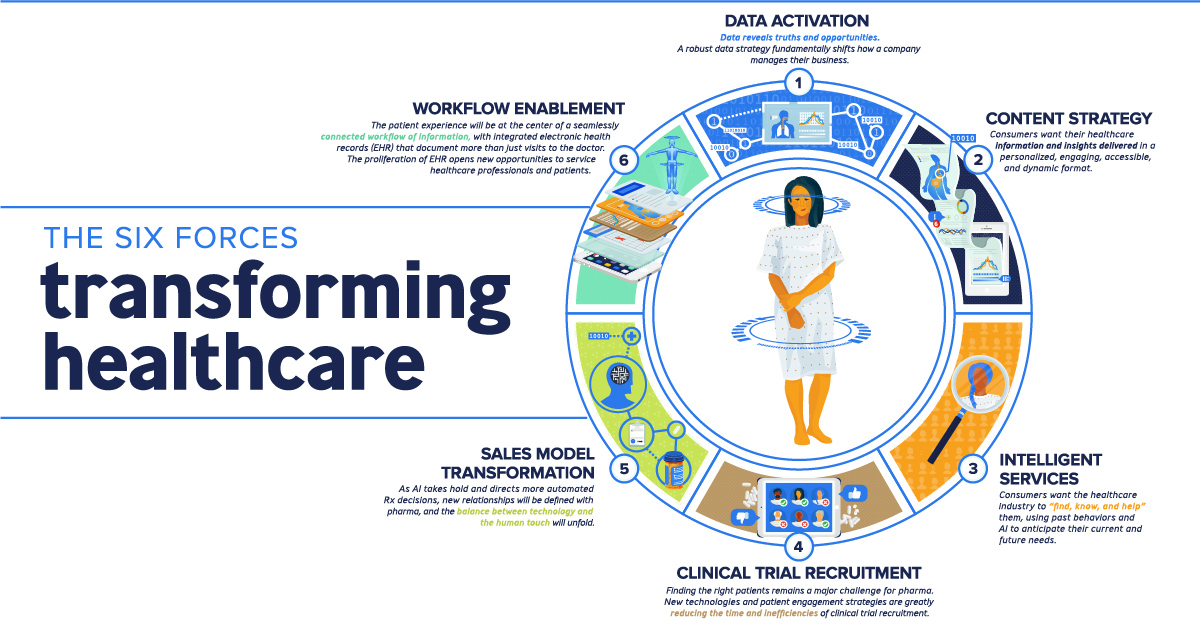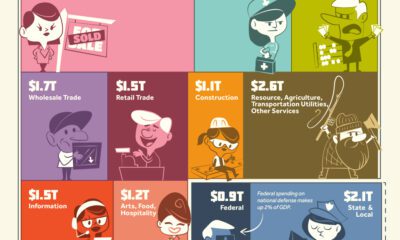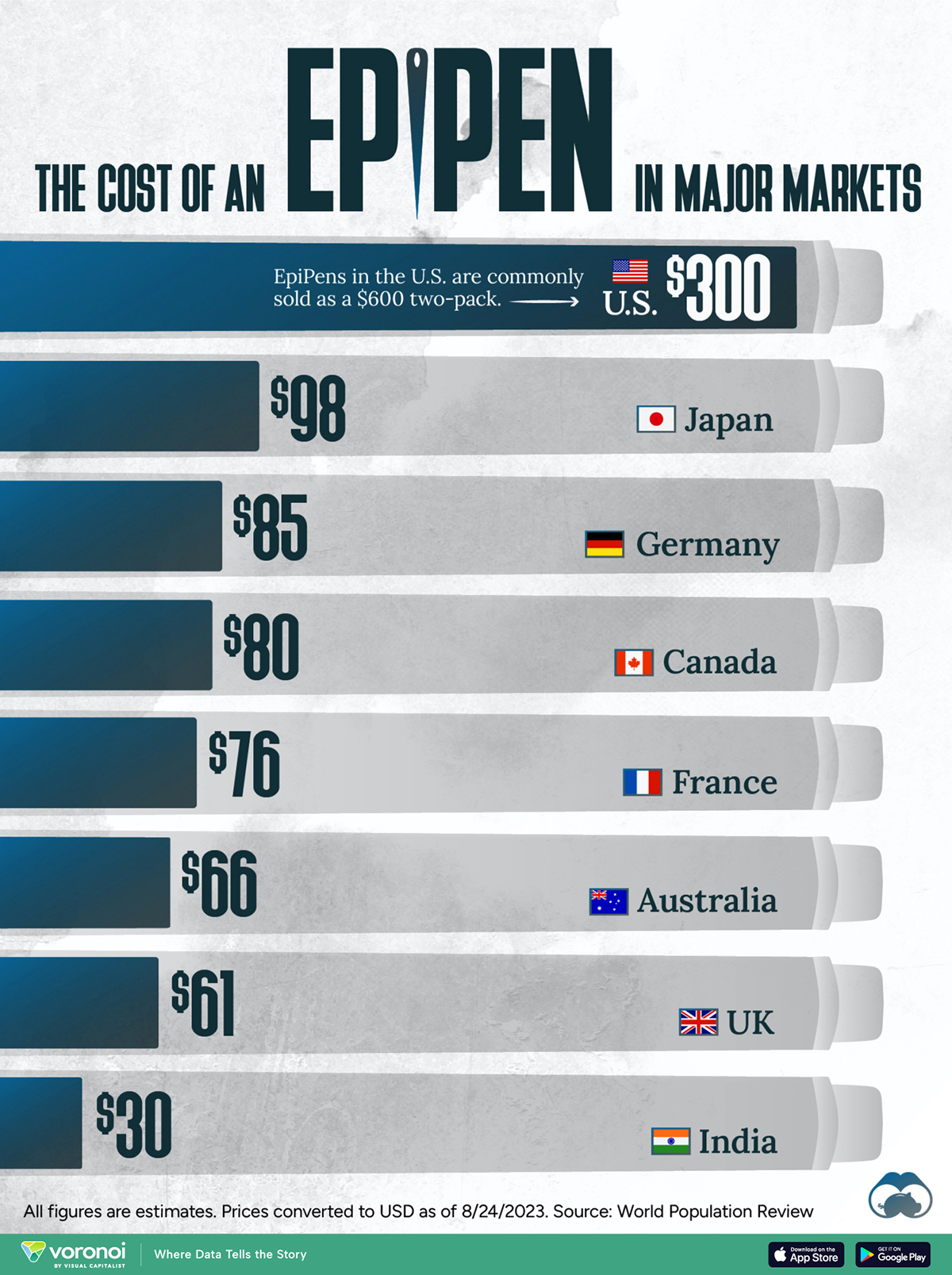Healthcare
The 6 Forces Transforming the Future of Healthcare

The 6 Forces Transforming the Future of Healthcare
Disruptive technologies are advancing healthcare at an extraordinary pace.
By 2020, there will be 50 billion devices connected to the internet, and many of these devices will be tracking the health data of individuals. This will empower consumers in an exciting way, but it will also fundamentally shift how healthcare companies work and interact with their customers.
Today’s infographic comes to us from Publicis Health and it is the introduction to a seven-part series about the future of healthcare, and how companies will have to adapt to stay relevant.
The Changing Customer
The smartphone boom has changed the consumer experience in practically every industry, and it is now cascading into the healthcare market:
Commoditized
76% of consumers expect pharma/healthcare providers to provide services that help them manage their health.
Connected
59% of consumers expect their healthcare customer services to be as good as Amazon’s.
Quantified
76% of consumers expect pharma/healthcare to understand their individual needs.
In other words, the traditional healthcare model no longer aligns with the consumer mindset.
The Six Forces
Publicis Health, a global leader in health, has identified six transformative forces that healthcare companies must address to gain a competitive edge:
1. Data Activation
Data reveals truths. A robust data strategy fundamentally shifts how company manages their brands.
2. Workflow-Empowered Solutions
The patient experience will be at the center of a seamlessly connected workflow of information, with integrated electronic health records (EHR) that document more than just visits to the doctor. The proliferation of EHR opens new opportunities to service healthcare professionals and patients.
3. Content Strategy
Consumers want their healthcare information and insights delivered in a personalized, engaging, accessible, and dynamic format.
4. Intelligence Services
Consumers want the healthcare industry to “find, know, and help” them, using past behaviors and AI to anticipate their current and future needs.
5. Clinical Trial Recruitment
Finding the right patients remains a major challenge for pharma. New technologies and patient engagement strategies are greatly reducing the time and inefficiencies of clinical trial recruitment.
6. Sales Model Transformation
As AI takes hold and directs more automated Rx decisions, it will be more than just about relationships but also about relevant skills to make use of the new tools, while preserving the need for human touch.
Together, these forces build the transformative foundation to better performance, customer experience, and health outcomes.
This is part one of a seven part series. Stay tuned by subscribing to Visual Capitalist for free, as we go into these six forces in more detail in the future.
Healthcare
The Cost of an EpiPen in Major Markets
This visualization compares EpiPen prices around the world, with the U.S. having the highest prices by far.

The Cost of an EpiPen in Major Markets
This was originally posted on our Voronoi app. Download the app for free on iOS or Android and discover incredible data-driven charts from a variety of trusted sources.
EpiPens are auto-injectors containing epinephrine, a drug that can treat or reverse severe allergic reactions, potentially preventing death.
The global epinephrine market was valued at $1.75 billion in 2022 and is projected to reach $4.08 billion by 2030. North America represents over 60% of the market.
EpiPens, however, can be prohibitively expensive in some regions.
In this graphic, we present estimated EpiPen prices in major global markets, compiled by World Population Review and converted to U.S. dollars as of August 2023.
Why are U.S. Prices so High?
The U.S. stands out as the most expensive market for EpiPens, despite over 1 million Americans having epinephrine prescriptions. After Mylan (now part of Pfizer) acquired the rights to produce EpiPens in the U.S. in 2007, the cost of a two-pack skyrocketed to $600, up from about $60.
| Country | Price (USD) |
|---|---|
| 🇺🇸 U.S. | 300* |
| 🇯🇵 Japan | 98 |
| 🇩🇪 Germany | 85 |
| 🇨🇦 Canada | 80 |
| 🇫🇷 France | 76 |
| 🇦🇺 Australia | 66 |
| 🇬🇧 UK | 61 |
| 🇮🇳 India | 30 |
*Per unit cost. Commonly sold as a two-pack, meaning total cost is equal to $600
Former Mylan CEO Heather Bresch defended the price hikes to Congress, citing minimal profit margins. Mylan eventually settled with the U.S. government for a nine-figure sum.
Notably, EpiPens are available at a fraction of the cost in other developed countries like Japan, Germany, and Canada.
Making EpiPens More Affordable
Efforts to improve EpiPen affordability are underway in several U.S. states. For instance, the Colorado House approved a $60 price cap on epinephrine, now under review by the state Senate.
Similar measures in Rhode Island, Delaware, Missouri, and Vermont aim to ensure insurance coverage for epinephrine, which is not currently mandatory, although most health plans cover it.
-

 Real Estate2 weeks ago
Real Estate2 weeks agoVisualizing America’s Shortage of Affordable Homes
-

 Technology1 week ago
Technology1 week agoRanked: Semiconductor Companies by Industry Revenue Share
-

 Money1 week ago
Money1 week agoWhich States Have the Highest Minimum Wage in America?
-

 Real Estate1 week ago
Real Estate1 week agoRanked: The Most Valuable Housing Markets in America
-

 Business2 weeks ago
Business2 weeks agoCharted: Big Four Market Share by S&P 500 Audits
-

 AI2 weeks ago
AI2 weeks agoThe Stock Performance of U.S. Chipmakers So Far in 2024
-

 Misc2 weeks ago
Misc2 weeks agoAlmost Every EV Stock is Down After Q1 2024
-

 Money2 weeks ago
Money2 weeks agoWhere Does One U.S. Tax Dollar Go?




















